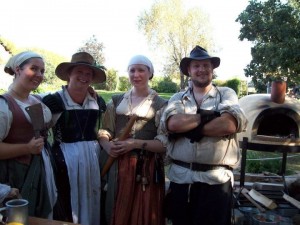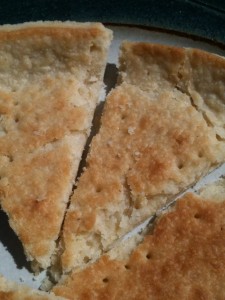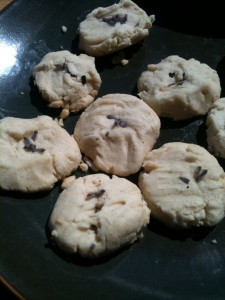
This past weekend, we began demonstrating bread recipes for the Wood Fired oven at the Minnesota Renaissance Festival. Most of our recipes this weekend turned out well. We made a rustic peasant bread and a rye bread. I usually don’t care for rye bread, but this recipe was quite tasty.
Rye Bread Ingredients:
1 oz of dry yeast
1 and ½ cup of warm water
½ cup of molasses
6 tbsp softened butter
2 cups rye flour
¼ cup cocoa
2 tbsp caraway seed
2 tsp salt
3 and ½ cups of flour
Cornmeal
In a large bowl, dissolve yeast in warm water. Beat in the molasses, butter, rye flour, cocoa, caraway seeds, salt and 2 cups all-purpose flour to form a stiff dough.
Turn onto a floured surface; knead until smooth and elastic, about 6-8 minutes. Place in a greased bowl, turning once to greased top. Cover and let rise in a warm place until doubled, about 1-1/2 hours.
Punch dough down. Turn onto a lightly floured surface; divide in half. Shape each piece into a loaf, about 10 in. long. Grease two baking sheets and sprinkle with cornmeal. Place loaves on prepared pans. Cover and let rise until doubled, about 1 hour.
Bake at 350 degrees F for 35-40 minutes or until bread sounds hollow when tapped. Remove from pans to wire racks to cool.

Rustic Peasant Bread
1 pkg dry yeast
2 cups warm water
1 Tbsp sugar
2 tsp salt
4 cups flour
Cornmeal
Melted butter
Place yeast, water, sugar, and salt in bowl and stir until dissolved.
Add flour and stir until well blended. Do not knead. Cover and let rise until double in size (about 1 hour).
Remove dough from bowl and place in 2 rounds on a greased cookie sheet sprinkled with cornmeal. Let rise an additional hour. Brush top on dough with melted butter and bake at 425 degrees for 10 minutes.
Reduce oven temperature to 375 degrees and cook for an additional 15 minutes. Serve warm.



